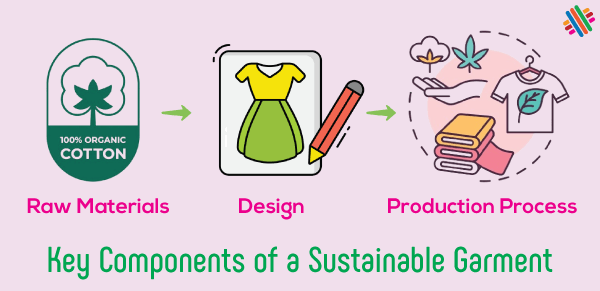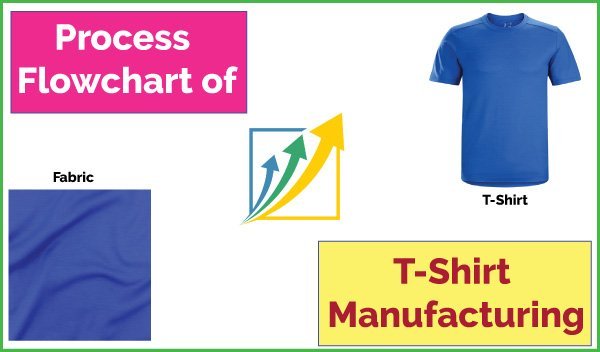What is a Sustainable Garment: A Comprehensive Guide
Introduction
A sustainable garment is a clothing item in which the design making, production and consuming process follow an environment friendly chain. It optimizes the negative impact on the environment. It also promotes the social responsibility around the fashion industry. It encloses various factors like design choice, raw materials used, production and distribution process.

Top 5 importance of Sustainable Fashion
Sustainable fashion has gained significant attention in last few years. It addresses the negative environmental and social impacts of the fashion industry. Thus, it places emphasis on creating garments that are made to long lasting, reducing waste and pollution, and promoting fair labor practices.
- It helps to bring down the environment pollution and deterioration related to traditional fashion practices.
- It ensures the optimal use of resources like chemicals, water, energy, and other raw materials.
- It encourages the recycling, upcycling, and designing durable and long-lasting products to minimize the waste.
- It raises awareness among consumers about the environmental and social impacts of their fashion choices.
- It encourages the use of cutting-edge technologies and creates sustainable and eco-friendly fashion alternatives.
Overview of the Fashion Industry’s Environmental Impact
The fashion industry depends on an orderly supply chain. Raw material sourcing, manufacturing, distribution and retailing are the main parts of the chain. But unfortunately, these are infamous for their ruinous environmental impact.
When manufacturing the textile raw materials like cotton, chemicals and pesticides are used. This causes the water and soil pollution. After that, when the cotton is processed in a textile industry to make yarn and fabrics, dyes and chemicals are used. Also, huge amount of water and energy are consumed. These cause the air, water and soil pollution.
Now comes the fashion houses and the garment industries. These are responsible for making huge amount of textile waste. After that, comes the distribution of the goods through ships and vehicles. These are directly responsible for the environment pollution. The retailers are also directly and indirectly responsible to ruin the environment.
Key Components of a Sustainable Garment
A sustainable garment has three key components. These are raw materials, production processes, and the design choices.

Raw Materials
The use of eco-friendly and organic fabrics are the main parts of a sustainable garment. Organic cotton, linen, recycled polyester, and bamboo are sustainable raw materials. These are free from harmful pesticides and also biodegradable and renewable. Besides, regenerated nylon can be used to reduce the demand for raw resources.
Alternative leather and fur made from innovative materials like pineapple fibers or mushroom-based leather substitutes are also gaining recognition as sustainable alternatives to traditional animal-derived materials.
Production Processes
Adopting sustainable production processes is essential to minimize the environmental impact of garment manufacturing.
Low-impact dyeing and printing techniques, which use natural dyes or innovative technologies like digital printing, can reduce water consumption and eliminate toxic chemicals commonly found in conventional dyeing processes.
Water and energy efficiency are crucial in sustainable production. Manufacturers employ advanced technologies like foam finishing technology to reduce water usage and energy consumption. It optimizes the production process to minimize the strain on natural resources.
Fair labor practices play a vital role in sustainable fashion. The global brands should prioritize ethical working conditions and provide fair wages to workers. Total fashion industry should follow the guidelines set by international labor organizations.
Design
Fashion trends changes daily. To withstand changing fashion trends, the designers should focus on creating timeless and versatile styles. The designers should also consider the classic silhouettes and invest in quality raw materials to make garments having longer lifespan. It will reduce the need for frequent replacements.
Designers also consider ways to make garments modular and repairable. This approach allows for components to be interchanged or repaired when they become worn or damaged. It will extend the life of the garment and reduce textile waste.
Minimizing waste in pattern cutting is another design strategy employed in sustainable fashion. By optimizing fabric usage and reducing offcuts, the designers can minimize unnecessary textile waste.
Certifications and Standards
The certifications and standards bodies look to validate the sustainability of garments. They also ensure transparency and accountability throughout the fashion supply chain.
Global Organic Textile Standard (GOTS)
It is one of the most recognized and uncompromising certification body for organic textiles. It guarantees that the entire supply chain, from fiber cultivation to labeling, meets strict environmental and social criteria.
Fair Trade Certification
Fair Trade works on fair labor conditions and ensures fair wages for workers. So, this certification helps to reduce poverty and enable sustainable development for workers and their families. It also improves social and economic empowerment among marginalized communities those who involved in the production process.
Cradle to Cradle Certification
Cradle to Cradle certification focuses on sustainability throughout a garment’s entire lifecycle. This certification assesses raw materials, manufacturing processes, renewable energy usage, water consumption, and social fairness. It also encourages continuous improvement in sustainability practices.
Environmental Impact of Traditional Fashion
The traditional fashion industry current practices cause many environmental problems.
Fast Fashion and Overconsumption
In Fast fashion system, style changes quickly. So, it requires inexpensive clothing to cope up the system. Fast fashion leads to a culture of overconsumption. So, this helps to generate massive amounts of textile waste.
Pollution from Textile Production
There are various types of textile industries like spinning, weaving, dyeing, printing and finishing. For cotton spinning, a huge amount of raw cotton is used. So, for cotton production different types of pesticides and chemicals are used. This causes environment pollution. Besides many types of textile waste produced in the spinning industries. In weaving industries, huge amount of energy is needed. This weaving industries also produce textile wastage. In dyeing, printing and finishing industries, huge amount of dyes, chemicals and water is used. This leads to environment pollution.
Waste in the Fashion Industry
Waste in the fashion industry is a great concern. This industry produces a massive amount of fabric scraps and unsold stock. These end up in landfills or incinerators and cause pollution and greenhouse gas emissions.
Benefits of Sustainable Garments
Choosing sustainable garments has several notable benefits as follows:
Reduced Environmental Impact
Sustainable garments reduce the dependence on natural resources. It helps to minimize pollution and combat climate change. It also helps to preserve eco-systems and biodiversity.
Ethical and Social Responsibility
Sustainable fashion prioritizes fair labor practices. It ensures that, garment workers receive fair wages and work in a safe condition. By supporting brands that maintain ethical standards, consumers contribute to the welfare of workers.
Economic Benefits for Sustainable Brands
Sustainable brands often invest in local communities through fair practices. So, it is the responsibility of the consumers to support these brands. In this way consumers contribute to the growth of socially responsible businesses.
Challenges in Achieving Sustainability in Fashion
To achieve sustainability in fashion, there are many challenges as follows:
Consumer Awareness
Consumer awareness plays a vital role in driving sustainable fashion forward. Many consumers don’t even know the environmental and social impact of their clothing choices. So, education and advocacy are so important to increase awareness and inspire the conscious consumption.
Affordability of Sustainable Fashion
To make sustainable clothing, need use of eco-friendly materials and ethical production practices. So, the price of the products may be higher. This may limit accessibility for some consumers. But due to the growth of demand of sustainable fashion, prices are gradually becoming more competitive.
Industry Resistance to Change
To adopt the sustainable practices, the fashion industry faces many problems. These are the reliance on outdated systems, complex supply chains, and profit-driven motivations. To overcome these problems, need to encourage collaboration and innovation, and also change the policy.
Case Studies of Sustainable Fashion Brands
There are several sustainable fashion brands have emerged as leaders in the industry. They are pioneering change and setting new standards.
Patagonia
Patagonia is a renowned outdoor apparel brand committed to sustainability. They prioritize transparency and use recycled materials. They promote repairability and durability in their products. They also actively engage in environmental and social advocacy. They are showcasing their commitment to create a more sustainable fashion industry.
Stella McCartney
Stella McCartney is a luxury fashion brand recognized for its commitment to sustainable practices. They refuse to use leather or fur in their products. They prioritize innovative materials like fake leather and fur instead. McCartney’s brand promotes circularity and aims to minimize waste throughout the entire production cycle.
Eileen Fisher
Eileen Fisher focuses on timeless designs and sustainable materials. They implement a buy-back program, encouraging customers to return worn garments for store credit. Eileen Fisher then refurbishes or upcycles the items to minimizing waste and promoting circularity.
Future Trends in Sustainable Fashion
The future of sustainable fashion has so many potentials for innovation and positive change as follows:
Innovations in Sustainable Materials
As technology advances, more sustainable materials are being developed. Innovations such as fabric made from organic cotton, recycled polyester, etc. are emerging. They offer potential alternatives to conventional materials.
Technology and Sustainable Fashion
Technology plays a pivotal role in promoting sustainable practices in the fashion industry. From blockchain to track supply chains, 3D printing to reduce waste, and artificial intelligence to optimize production processes. Technology enables more sustainable and efficient operations.
Circular Fashion Economy
The adoption of a circular fashion economy, centered around recycling, upcycling, and reusing garments, is gaining momentum. This approach aims to minimize waste, extend the lifespan of clothing, and transition from a linear “take-make-dispose” model to a more sustainable circular system.
Conclusion
The fashion industry embracing sustainable practices and technologies. So, we have the opportunity to reshape the total fashion industry chain. We can create a future where style and sustainability coexist side by side. Now it’s time for the consumers and the industry to get together to express the values of sustainability in every aspect of fashion. Let’s make a conscious choice to create a better and more sustainable fashion future.
Also read:





What is a Sustainable Garment ?